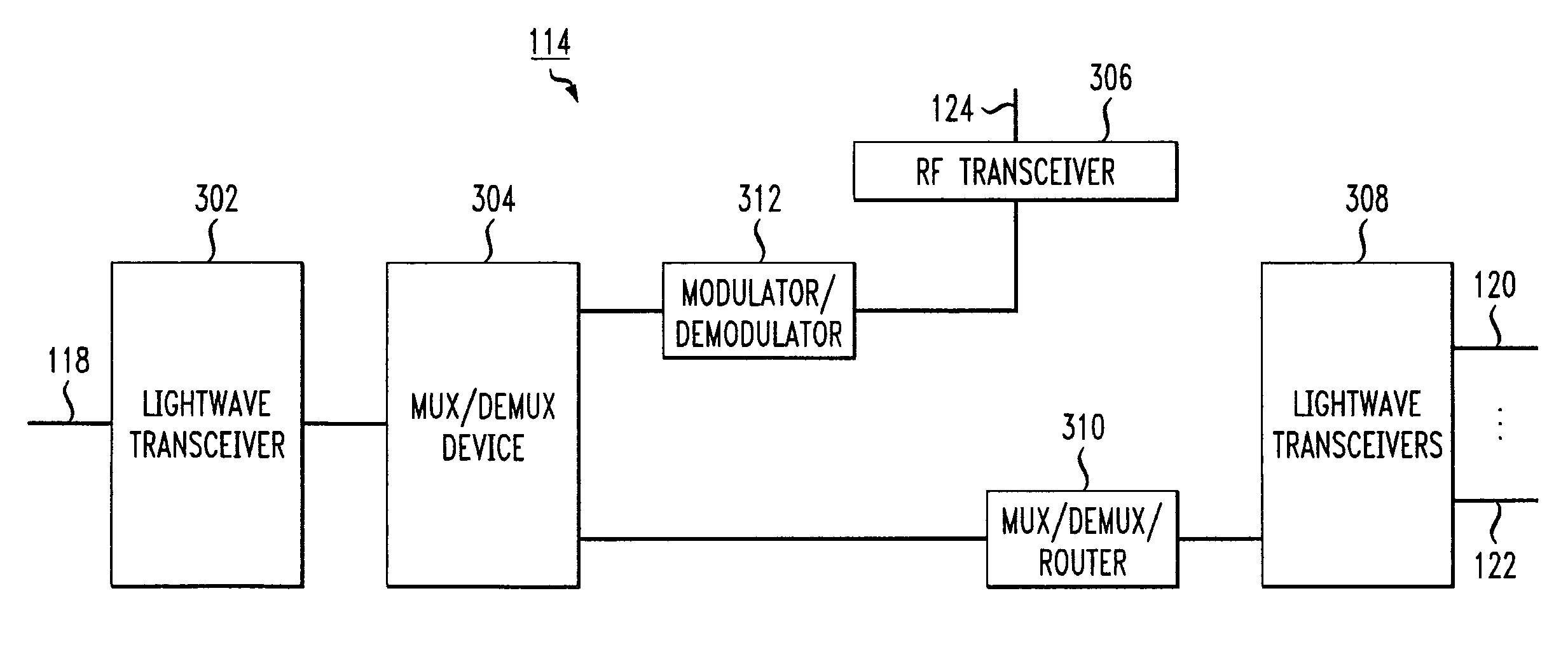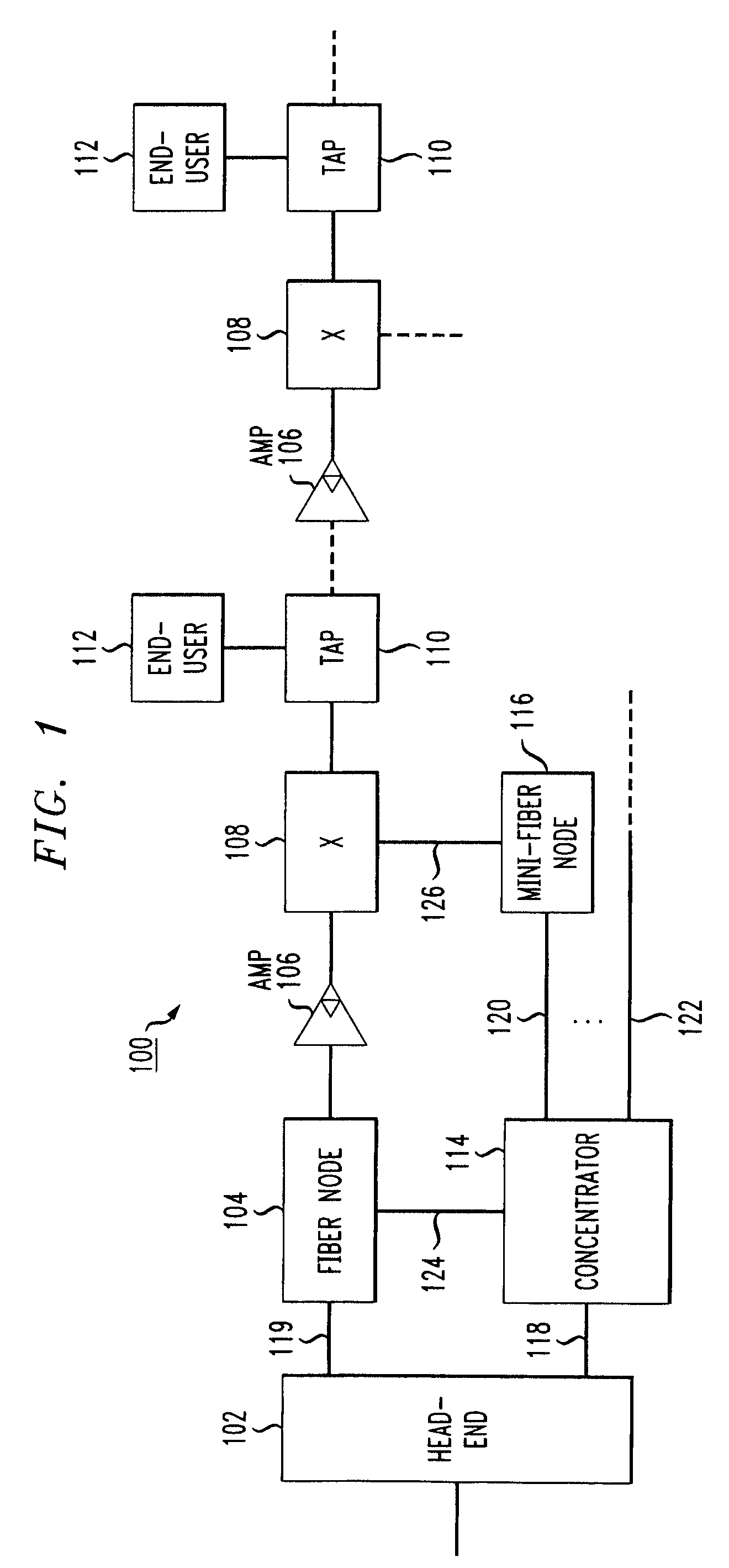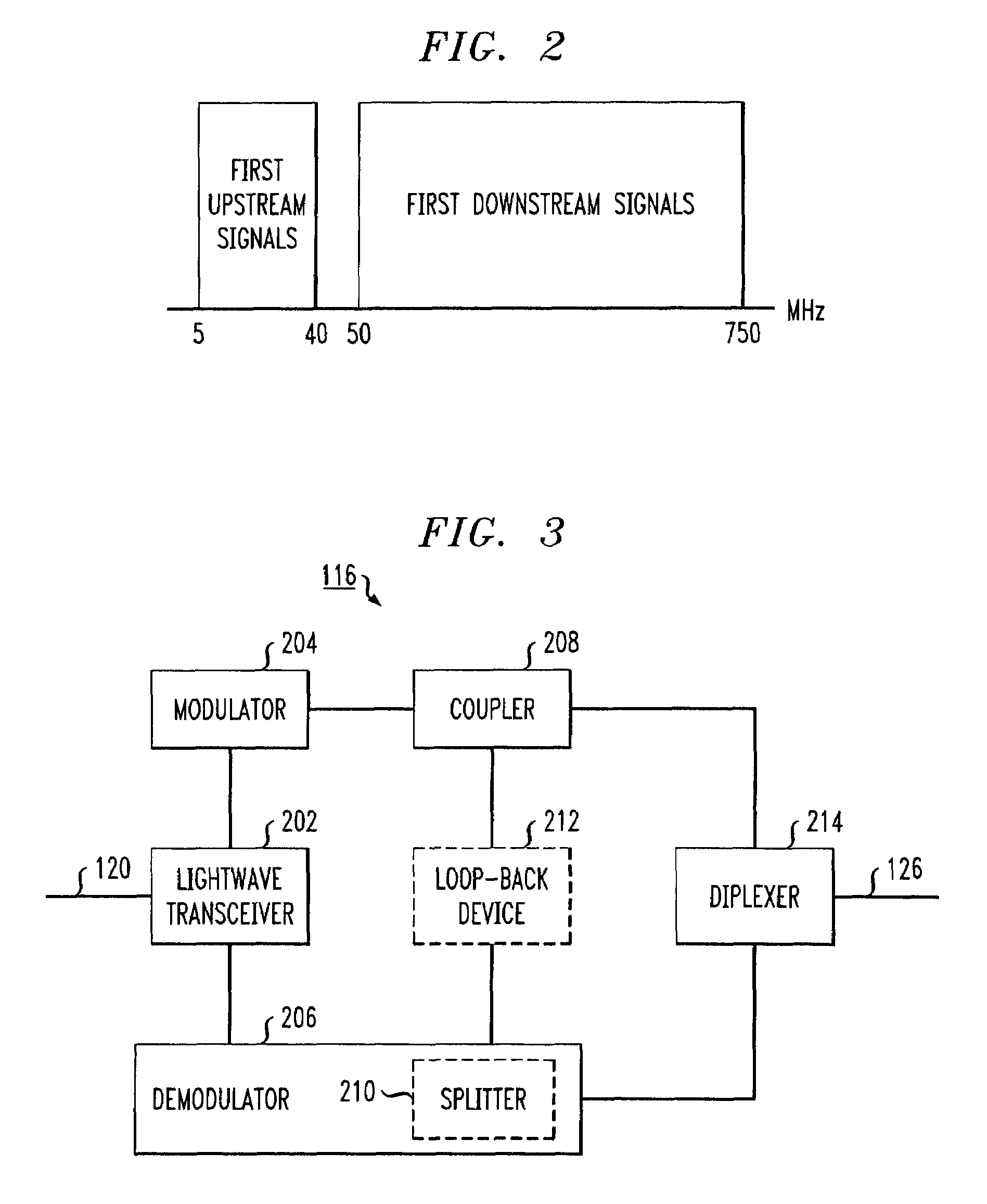Fiber/wired communication system
a communication system and fiber-wire technology, applied in the field of communication systems, can solve problems such as stress on current systems to their limits, and achieve the effects of reducing the communication traffic between the concentrator and the head-end, increasing efficiency, and increasing reliability
- Summary
- Abstract
- Description
- Claims
- Application Information
AI Technical Summary
Benefits of technology
Problems solved by technology
Method used
Image
Examples
Embodiment Construction
[0025]FIG. 1 shows an exemplary block diagram of a communication system 100 between a head-end 102 and end-users 112. A first downstream signal such as broadcast information is transmitted from the head-end 102 to a fiber node 104. The fiber node 104 forwards the broadcast information to the end-users 112 via amplifiers 106 and taps 110. The end-users 112 may communicate with the head-end via an upstream channel through the taps 110, the amplifiers 106 (upstream indicated by the smaller triangle within the larger triangle) and the fiber node 104.
[0026]Analog communication signals between the head-end and the fiber node 104 are transmitted via an optical fiber(s) 119. The communication signals may include first downstream traditional cable television broadcast signals, for example. First upstream signals from the end-users 112 may be transmitted to the head-end via a band different than a band for the first downstream broadcast signals.
[0027]FIG. 2 shows an exemplary band allocation ...
PUM
 Login to View More
Login to View More Abstract
Description
Claims
Application Information
 Login to View More
Login to View More - R&D
- Intellectual Property
- Life Sciences
- Materials
- Tech Scout
- Unparalleled Data Quality
- Higher Quality Content
- 60% Fewer Hallucinations
Browse by: Latest US Patents, China's latest patents, Technical Efficacy Thesaurus, Application Domain, Technology Topic, Popular Technical Reports.
© 2025 PatSnap. All rights reserved.Legal|Privacy policy|Modern Slavery Act Transparency Statement|Sitemap|About US| Contact US: help@patsnap.com



